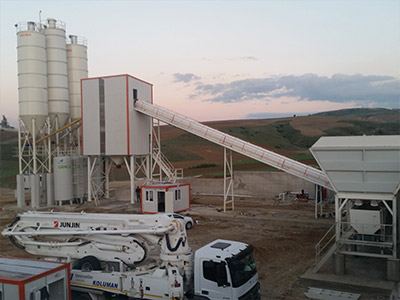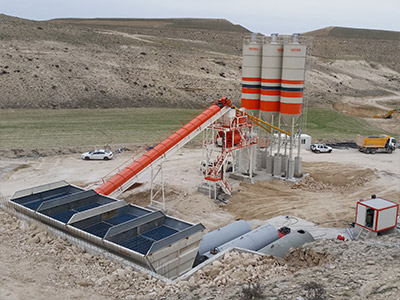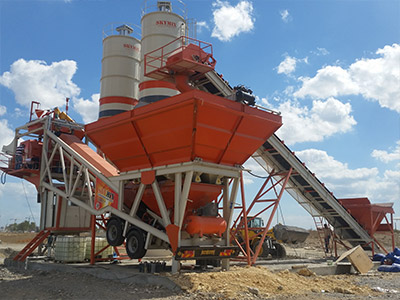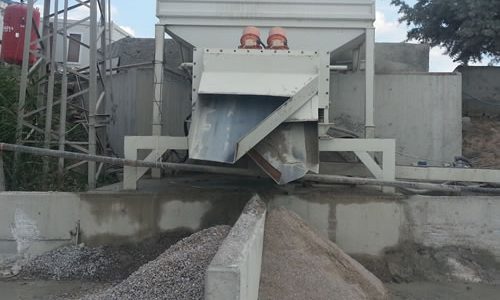Concrete Batching Plants
+90 (212) 855 02 04
Concrete Batching Plants
mobile concrete batching plant(portable concrete batching plant) is an innovation movable concrete mixing plant designed to fulfill a variety of applications. It is mobile so it's an ideal model for distance construction projects like roads, bridges,

What is Concrete Batching?
Facilities where ready-mixed concrete components such as cement, water, sand, gravel, crushed stone and aggregate are stocked, mixed in certain quantities, ready-mixed concrete is produced and truck mixers are filled are called "concrete plants".
Concrete plants mix, control and transport the materials that make up concrete; It consists of mechanical, electronic, pneumatic and hydraulic systems and equipment. Among these equipment that make up the concrete plant; There is an aggregate bunker, aggregate weighing band, mixer feeding band, aggregate bucket, cement silos, cement screw, concrete mixer and automation system.
There are many types of concrete batching plants on the market.


Stationary Concrete Batching Plant
Stationary Concrete plants are plants that combine components such as sand, cement and stone with water and produce concrete immediately after the mixing process. Concrete plants are also necessary for filling the produced concrete into truck mixers.
Concrete plants consist of systems that produce concrete and mix its materials. The equipment that makes up the Stationary Concrete Plant are generally cement silos, aggregate bucket, concrete beater, feeding band, beater, aggregate bunker and aggregate weighing band.
Son ürün küp şeklindedir ve yüksek yol, demiryolu, su koruma ve beton karıştırma istasyonu için nitelikli agrega sağlayarak müşteriler için önemli ekonomik faydalar sağlar.
Mobile Concrete Batching Plant
Since all parts of mobile concrete batching plants are designed to be placed on the main chassis, they can be transported with a single tractor. Optionally, a feedback unit can be used.
Concrete batching plants can be placed wherever desired depending on the conditions of the construction sites. Settlement designs are made by Megamak meticulously, taking into account all factors and keeping site economy in the foreground, at minimum operating costs.
Megamak Mobile Concrete Batching Plants are the product of the latest technology and comprehensive R&D studies preferred by ready-mixed concrete producers and construction companies in project-based concrete production; It is one step ahead with its portability, fast installation and ease of use in small spaces, high performance and quality.
Regarding Mobile Concrete Batching Plants, there are plants with capacities of 15 m3, 35 m3, 60 m3, 100 m3 and 120 m3.


Mobile Concrete Batching Plant
Concrete Recycling
How is concrete recycled? What is the order of operations? Concrete, demolition, repair, maintenance, etc. As a result of many situations, it becomes incapacitated and loses its former function. Recycling of this concrete can be done in various stages.
First of all, the concrete and asphalt materials in the form of waste and shredded materials are collected with the help of work machines, just like excavation collectors. It is brought to the relevant recycling facility. Here, the waste is sent to the concrete crushing machine and broken into small pieces. Thus, the groundwork is prepared for their separation into smaller building blocks and their secondary use. Raw materials such as gravel and sand are obtained by separating the crushed concrete into building blocks.
Although the raw materials obtained cannot be used directly in construction as before, in many road maintenance works; It can be easily used during maintenance and repair stages and can be recycled into the economy.